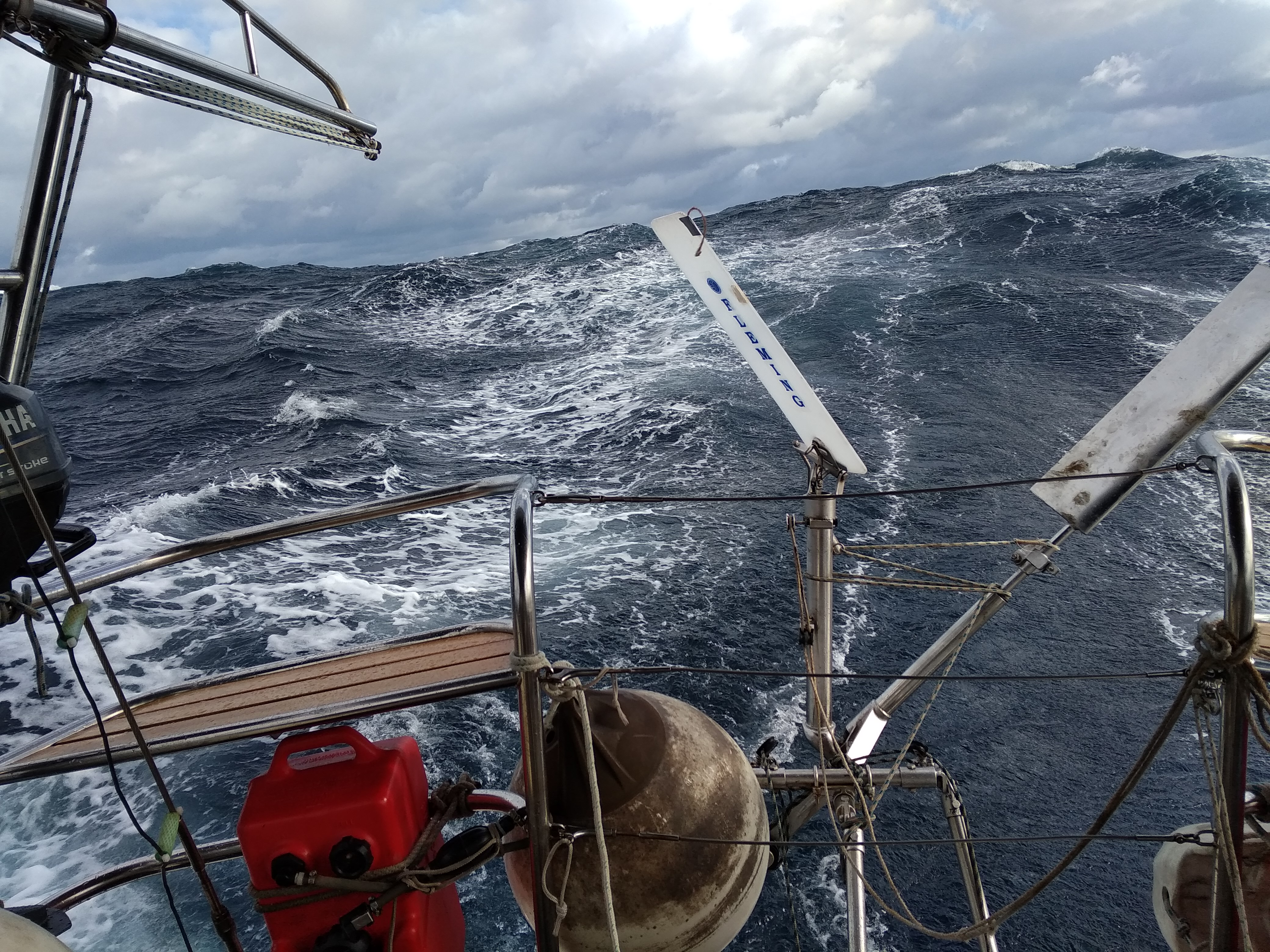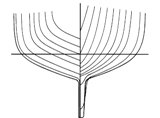Tasman Crossing 2018
Having arrived in Coffs Harbour it was now time to pick a good weather
window and sail east. Being alone is not always a good thing
because you get an idea then justify that decision not having someone
to discuss the pros and cons with. Predict wind has become very
popular with a certain sector of the cruising community because the
creators make wild claims and bundle it with the Iridium Go but it is
expensive well outside by range. In addition the Go East rally
gives their participants a further discount. It appears easy to
see what the wind and waves will do during your passage. Predict
Wind uses the old CSIRO forecast model which we ran in the Cyber 205
supercomputer in the late '80s. They use this model on a much
smaller computer and therefore the results are frequently very wrong.
I cleared customs on Friday ... was that a sign but did not leave port
for three days because the east coast low moving up the coast and out
across the Tasman was abeam of Coffs and the winds were strong but
dropping. One quickly falls into the trap that one model will
give you the right answer. I fell into that trap. The BOM
forecast the low moving East plus the fact I would have had to check-in
again to stay a few more days. Lazy not prudent.
By Monday the low was at least 200 nm off shore and I was ready to
go. I had baked bread, prepared meals in the freezer and got
Malua all ship shape like Bristol. So at 9:00 am I pulled up the
anchor and set sail out into the back of a low which was moving east at
a speed I could not match.
The course for New Caledonia was about 880 nm which would take about 6
or so days all going well. I settled into the ocean crossing mode
but monitored the barometer very closely. As I travelled further
away from the shore the waves started to pick up and the barometer
dropped steadily so I knew I was sailing right into the low. I
later found out it had stalled about 200 nm off the coast and I was
sailing for the dangerous quarter.

Now the wind was blowing from the south and the current was running
southwards – in the opposite direction so the ocean swell started to
get steeper and steeper while the wave tops were being blown off the
tops. I had put in one reef early so when the wind reached 25
knots the second reef went in only for a very short time before I had
to put the third reel in. Furl the genoa to almost nothing but it
was out on the spinnaker pole because I was now running diagonally down
the face of the waves. The wind instruments stopped working at 54 knots but all is well on board.
Suddenly the bilge alarm went off as I was at the wheel guiding Malua
down the waves not trusting the new auto pilot. Once, then a
second time and then continuously with a scream that would wake the
dead. What is going on is there a hole in Malua, maybe a
thru-hull had come adrift?
Down below I lifted the bilge hatch to taste the water but there was no
need the flow of water from the stern area was more than a breached
tank. This was serious. May be the shaft gland? Open
the door into the engine compartment. Shaft was OK but the water
flowing from the rudder area was a stream. Oh no! Not the rudder.
With the torch in my mouth I climbed into the engine room to look for
the source and there it was running like the Victoria Falls from the
port lazerette base – right over the old autopilot. What? Why that much
water? Back outside I looked at the water flowing over the deck
and lazerette but that could not cause that amount of water to enter
the vessel so what was it? As soon as I opened the lazerette
hatch the compartment was almost full of water with containers floating
on the surface. I remove a few and there right in front of me as
one of the larger waves broke and tumbled down towards the stern of
Malua the white water came over the swim platform and washed half way
up the stern before draining away. Why into the locker? The
locker contain the two gas bottles so that excess gas can drain out and
not be contain and stop an explosive build up of gas, The hole is
more than 20cm so a wave would flood the swim platform and drain
inwards to the locker and down through the hole I left when
reinstalling the old autopilot.
Down below to the emergency stores for a wooden plug and hammer and
back hanging over the stern to put into the hole. A good
tap/strike with the hammer and it would stay in place till I reached
land. After a few minutes the bilge alarm stopped and all
stations return to normal storm tactics.
At that point I went below put the kettle on for some hot tea and
settled into my captains chair as I watched the wind go up and down to
a high of 40 knots and an average of just a little over 30 knots.
Malua, as always, handled the conditions well, the new autopilot had a
few bad calls but what can you expect being so inexperienced.
It was now dark but I could still see the white waves behind me as we
raced forward down some of the steepest seas I have ever seen.
Not for a moment did I consider further reducing sail or changing
course… we where in a grove.
The day dawned with no sleep but an uneventful night and many miles
under the keel. I had noticed that the wind was dropping but
there again was it just the light that made the conditions look a bit
better? After a few more hours of steady declining seas and wind
we were back on track for a smooth passage to New Caledonia.
I have been in a few storm in my time from a very bad one off Cape Point
in Cape Town to the knock down a few days out from Tonga and one on passage
to New Zealand but this was the most severe with the steepest waves but
not the strongest winds. Thankfully it last just over 12 hours
which is quite bearable considering.
The balance of the trip was very easy with the sun comming out and the
wind dropping on some occasions to start the engine. I was able
to time my arrival for dawn to go through the pass and motor towards
Noumea city and marina. I made the mistake of telling the marina
I was not going to stay with them so I was religated to the back of the
que for clearance and in fact had to be boarded by Biosequerity at the
public whalf in the SW - not convenient. I did stop for fuel at
the end of the jetty and some bread then off to the Orphelinat Bay
anchorage to get the tender ready to do the rounds to clear in. A
simple process requiring a few km on my foulding bike.
Restock and ready for Denny to fly in for a few weeks cruising this delightful island Read
here...
Follow Malua.




